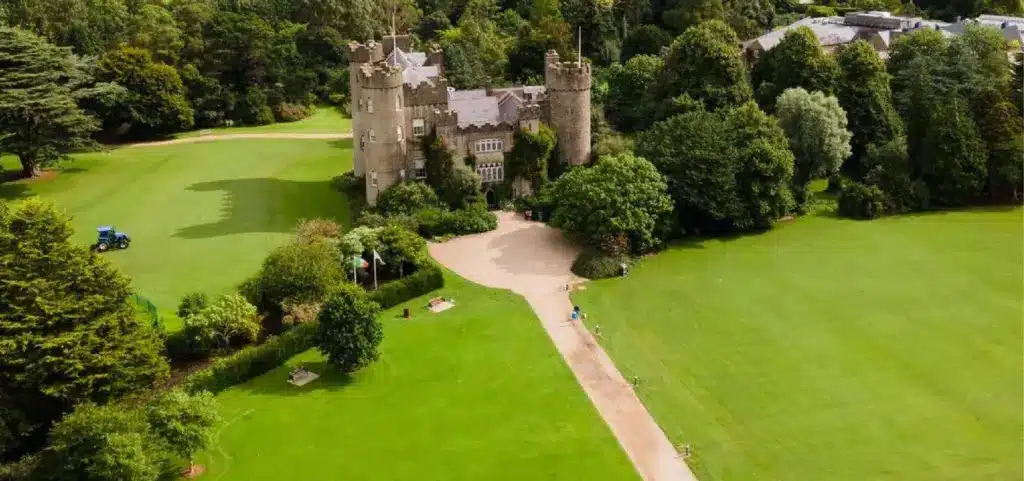
My upcycle project targeted a functional and maximalist aesthetic with a hockey theme. The opposite of this would be a non-functional minimal aesthetic. The perfect example of this would be growing lawns. This originally began in England back in the 11th – 17th centuries. In these times, many civilians tried to have as much land as possible and used it productively to grow food and other useful crops. The very wealthy Aristocrats grew short-maintained grass around the castles; some say this was to help see incoming invaders, and this was true but much less prominent. The main reason this existed was as a status symbol. In contrast, the peasants had very little land and had to use it as productively as possible. The rich and powerful were able to flex that they had so much land and wealth that they could afford to have non-productive plants and still pay to maintain them.
This ideology began to trickle down during later years. In the 19th-20th century in the United States, the architect Frederic Law Olmsted designed Central Park and also designed homes in the United States suburbs with large grassy areas, thus reinforcing the idea of grass around the homes and the name of lawns. Middle-class homes, HOA rules, and city ordinances began to enforce lawn maintenance to create a high-class uniform look from home to home. This gave birth to a new market and made its way into the American dream post-WWII to make it widespread.
Now, in the 21st century, this practice is being questioned. The use of toxic chemicals in pesticides and fertilizers, along with the large amount of water required to keep the lawns healthy, especially in dry climates like Arizona and California. This has made the market and social executable start to change and tradition to alternatives such as native plants, xeriscaping, or fake grass alternatives to create a more sustainable future.
The practice has a deep-rooted history that is the ideal candidate to counter the targeted aesthetics of my project. The growth of lawns is nonfunctional and nonproductive while also having a very minimalist aesthetic. My project focuses on the busy minimalist aesthetic while also being functional.
PC
- This is a picture of Malahide castle and gardens


2 Comments. Leave new
Hey Reilly,
You make a great case for your opposite aesthetic. The English growing lawn is the total opposite of a hockey, maximalist aesthetic, really great example! I do really enjoy those big green fields of grass, however it’s definitely not sustainable or practical at all, except maybe in high rain environments.
I fully agree that it is interesting how we stick with old traditions even when they are far from practical in the modern age!